#mycology
Text

#mushrooms#fungi#mushroom photography#mycology#forestcore#forest floor#original photographers#photographers on tumblr#green
198 notes
·
View notes
Text









Lempholemma cladodes
This little lichen is so small that you might glance at it and think ah, that's just a little crustose lichen, but SIKE! It's actually a dwarf fruticose lichen! This tiny, shrubby guy starts out small and rosette-like with appressed lobes but then develops terete, erect lobes that begin to branch and swell toward the apices. It looks more crustose when dry, and more fruticose when wet! It is black in color due to its cyanobacterial photobiont, which helps it survive in the wet crevices of calcareous rock it calls home.
images: source | source | source
info: source | source
#lichen#lichens#lichenology#lichenologist#mycology#ecology#biology#fungi#fungus#symbiosis#symbiotic organisms#cyanobacteria#not plants#natural science#life science#environmental science#Lempholemma cladodes#Lempholemma#I'm lichen it#lichen a day#daily lichen post#lichen subscribe#nature#naturalist#beautiful nature#weird nature#the natural world
36 notes
·
View notes
Text
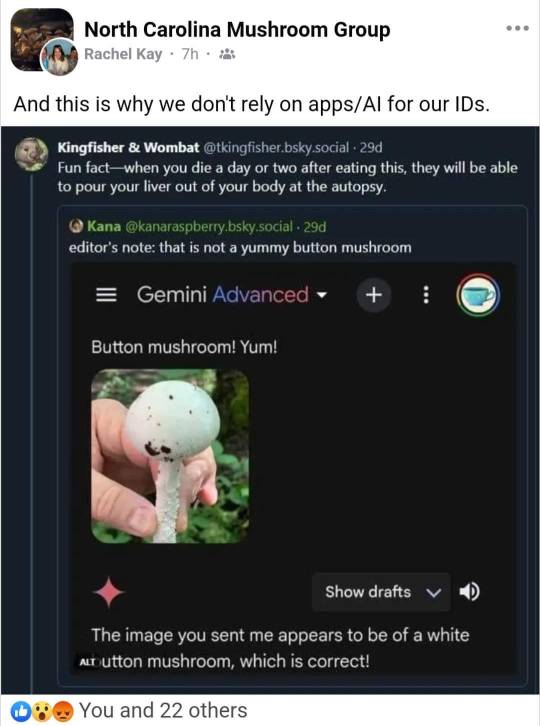
For those not in the know, this is one of the Amanita mushrooms referred to as a Destroying Angel. Never, ever, ever, ever forage with an app. Especially for mushrooms.
110K notes
·
View notes
Text
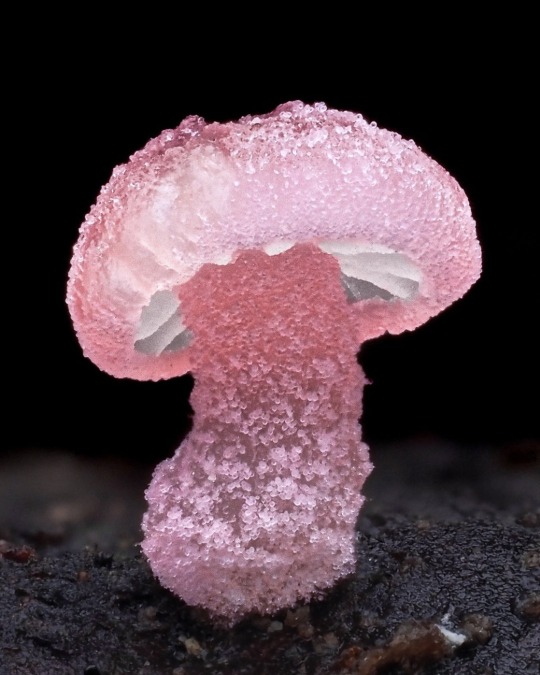
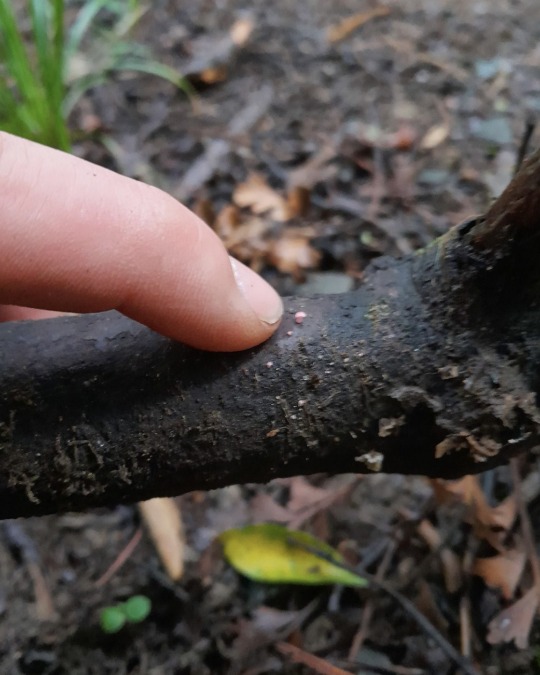
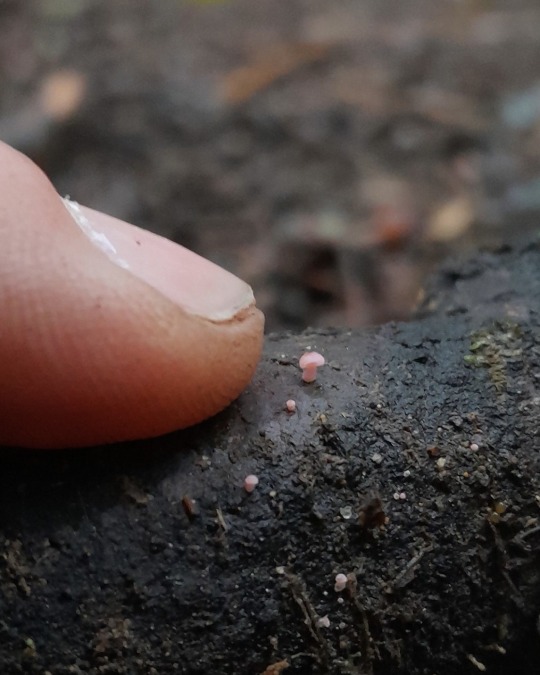
Super tiny Mycena Roseoflava.
Photographed by cyanesense
#aesthetic#nature#mushroom#mushrooms#garden#forest#mycology#naturecore#cottagecore#gardencore#goblincore#forestcore#fairycore#cute#photography#photographer#photographers on tumblr#fungus#fungi#pinkcore#pink aesthetic#pink
35K notes
·
View notes
Text
Just so everyone is aware:
An international group of qualified mushroom identifiers who do worldwide identification in emergency cases have identified the Shroomers App as a potentially very dangerous system that could kill you if you try to use it to identify edible mushrooms. They use AI to generate almost all of their content, including their identification profiles on their app as well as their books and other materials. Not only is this unethical from a content creation standpoint, it is also extremely dangerous.
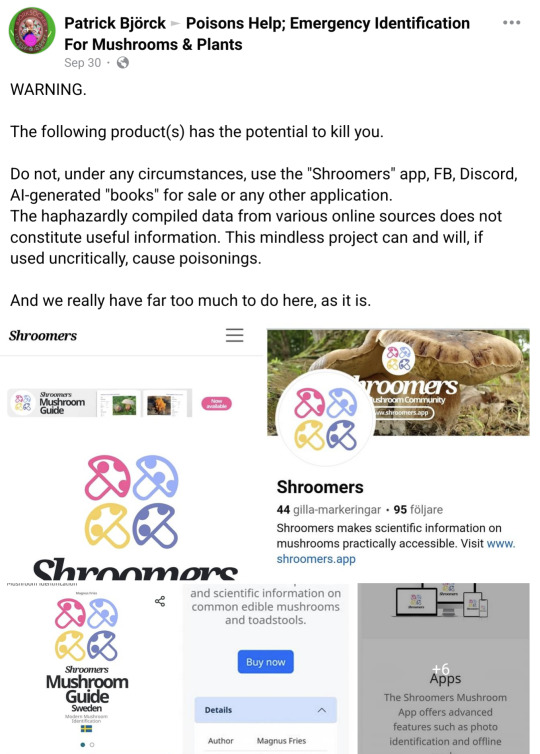
DO NOT USE APPS FOR IDENTIFICATION PURPOSES BEYOND SIMPLE CURIOSITY. A MISTAKE WHEN IDENTIFYING AN EDIBLE COULD COST YOU YOUR LIFE. DO NOT EAT ANY FORAGED MUSHROOM YOU CANNOT IDENTIFY YOURSELF BY SIGHT OR HAS BEEN IDENTIFIED IN PERSON BY SOMEONE WHO CAN.
ONLY BUY BOOKS FROM REPUTABLE SOURCES AND AT THIS POINT THAT MEANS ASKING EXPERIENCED PEOPLE WHAT BOOKS THEY USE.
Mushrooms are fun, amazing organisms. Enjoy safely.
#mushroom#mushroom identification#mushrooms#fungus#fungi#macrofungi#shrooms#mycology#shroomersapp#shroomers app#shroomers#mycophobia
45K notes
·
View notes
Text
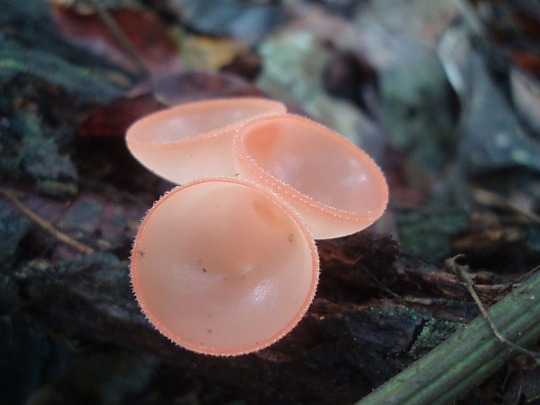

Cookeina speciosa
(Wine glass mushroom) 🍷
#plants#fungi#mushrooms#nature#mycology#aesthetic#mushroom aesthetic#plant aesthetic#nature aesthetic
9K notes
·
View notes
Text

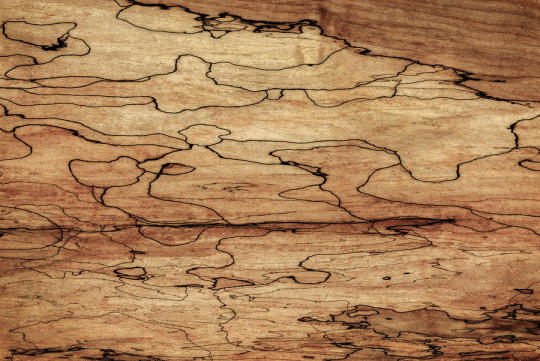
spalted wood - discoloured patterns in the wood that occur naturally when an infestation of fungus colonise a tree and extract nutrients from it, leaving behind a map of their battlefield
6K notes
·
View notes
Text
Mushrooms releasing spores into the wind. Captured by Paul Stamets
#nature#photography#mushrooms#spores#wind#fungus#fungi#mycology#science#woods#forest#dark#video#videos
21K notes
·
View notes
Text



Pleurotus pulmonarius
#pleurotus pulmonarius#mushrooms#fungi#mycology#mushroom photography#original photography#photographers on tumblr#forestcore#naturecore#forest floor#oyster mushroom
158 notes
·
View notes
Text
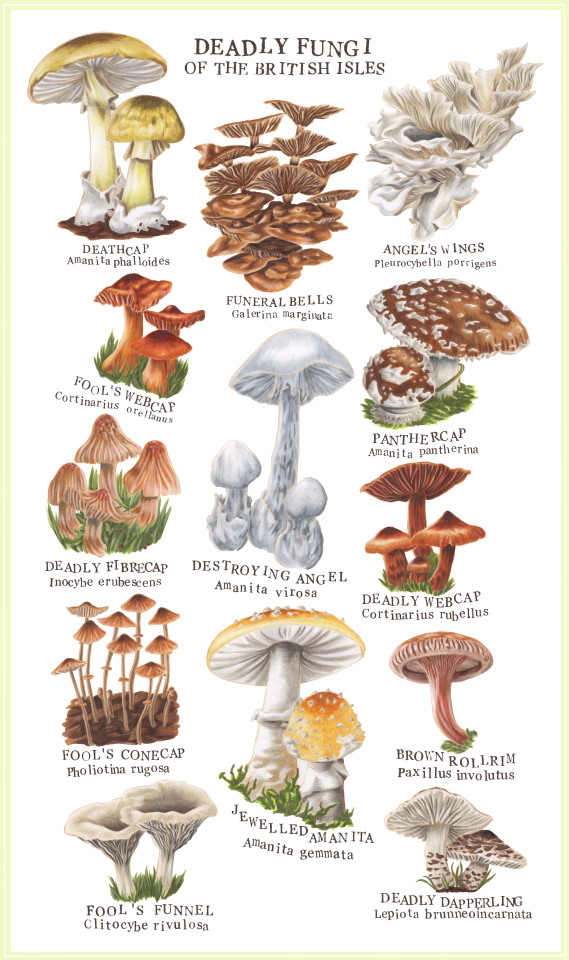
It's fungi season!! Don't eat these, you'll die
#tarot#art#illustration#illustrators on tumblr#illustrators of tumblr#copic#copic markers#ink#fantasy#fantasy art#fantasy illustration#traditional media#traditional illustration#traditional drawing#fungi#mycology#goblincore#cottagecore#fairycore#fungus#storybook#poster#poster art
5K notes
·
View notes
Text








Lecanora albellula
Wood-spot rim lichen
This crustose lichen has a warted-areolate or sunken, continuous thallus of pale gray, yellow, or beige. It has crowded, lecanorine apothecia with a disc that starts out sunken and pale pink or brown, and becomes convex and brown-black with age. The apothecia are often covered in a later of pale pruina. L. albellula has a chlorococcoid, green algal photobiont. You can find this precious little guy growing on lignum and bark at high elevations in montane regions of Europe and North America.
images: source | source | source
info: source | source
#lichen#lichens#lichenology#lichenologist#mycology#ecology#biology#fungi#fungus#nature#symbiosis#symbiotic organisms#algae#trypo#trypophobia#life science#environmental science#natural science#the natural world#beautiful nature#weird nature#Lecanora albellula#Lecanora#I'm lichen it#lichen a day#daily lichen post#lichen subscribe#go outside#take a hike#look for lichens
46 notes
·
View notes
Text
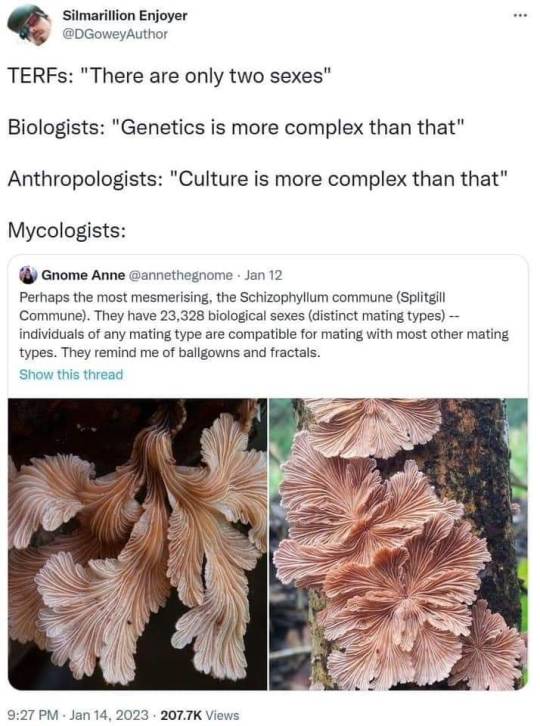
29K notes
·
View notes
Text
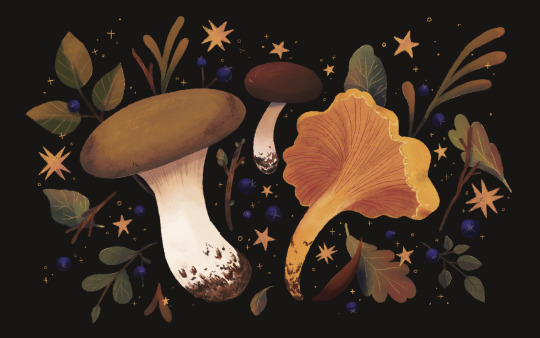
Foraging Finds
#cozy cottage#cottagecore#mushroom#mycology#fungi#goblincore#digital illustration#digital art#illustration#artists on tumblr
5K notes
·
View notes
Text
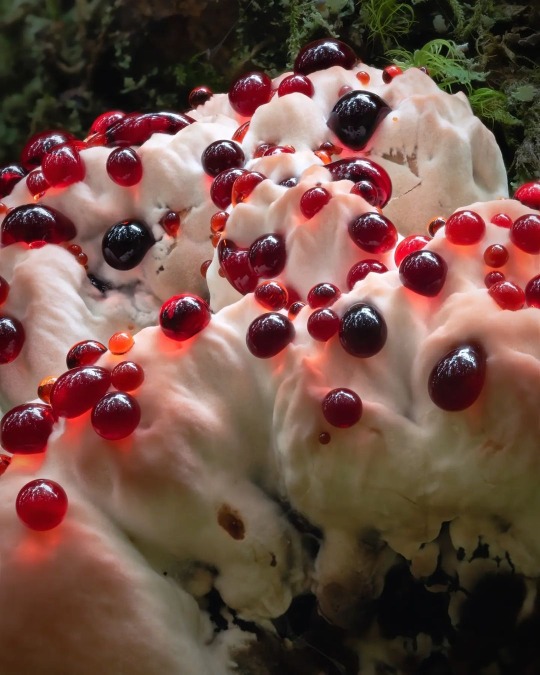
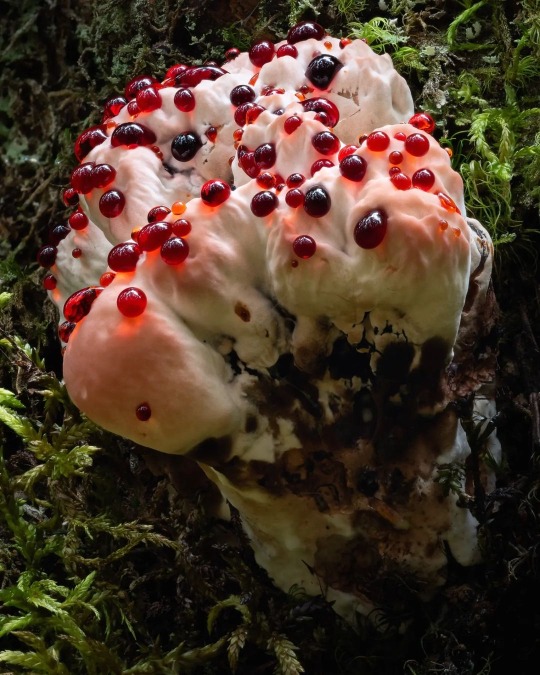
Hydnellum Peckii (also known as Strawberries and Cream, Devil’s Tooth, Bleeding Tooth Fungus), photographed by Kevin Moldenhauer
#fungi#fungus#mushroom#mushrooms#mycology#forest#forest floor#nature#aesthetic#naturecore#goblincore#fairycore#cottagecore#grandmacore#garden#gardencore#moss#forestcore#fairy aesthetic#fairytale#fairytales
3K notes
·
View notes
Text
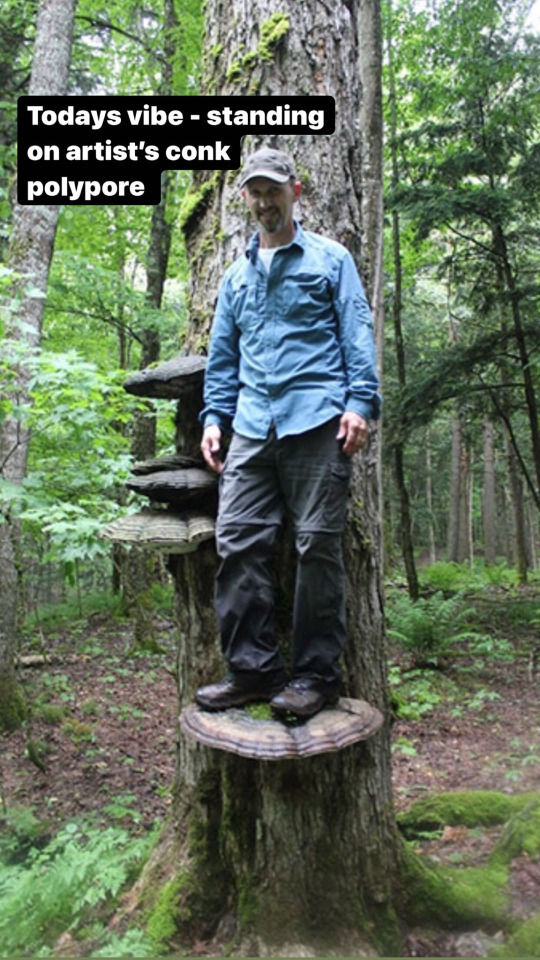
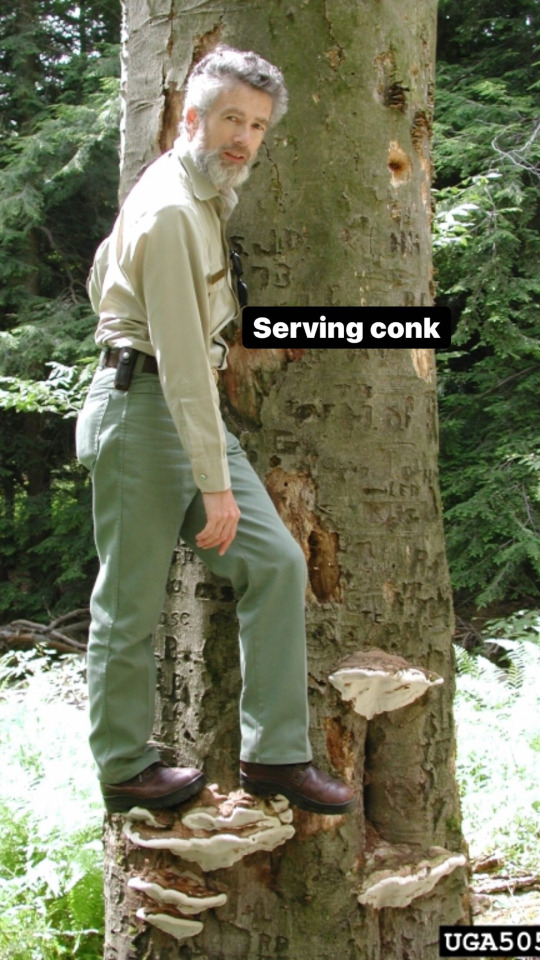
#correction- it’s just artist conk. not polypore#serving conk#image id in the alt text#there are many benifits to being a serene mycologist#mushrooms#mycology#artist’s conk#from my Instagram story#mushroom identification
41K notes
·
View notes
Text
supervisor at work desperately wants me to try her herbal mushroom coffee and I looked at the insert and it has cordyceps in it ‘for stamina’ and don’t get me wrong I’m sure it’s a normal edible non-parasitic variety but there IS a little part of me that’s like. oh so that’s what they’re calling it now
7K notes
·
View notes